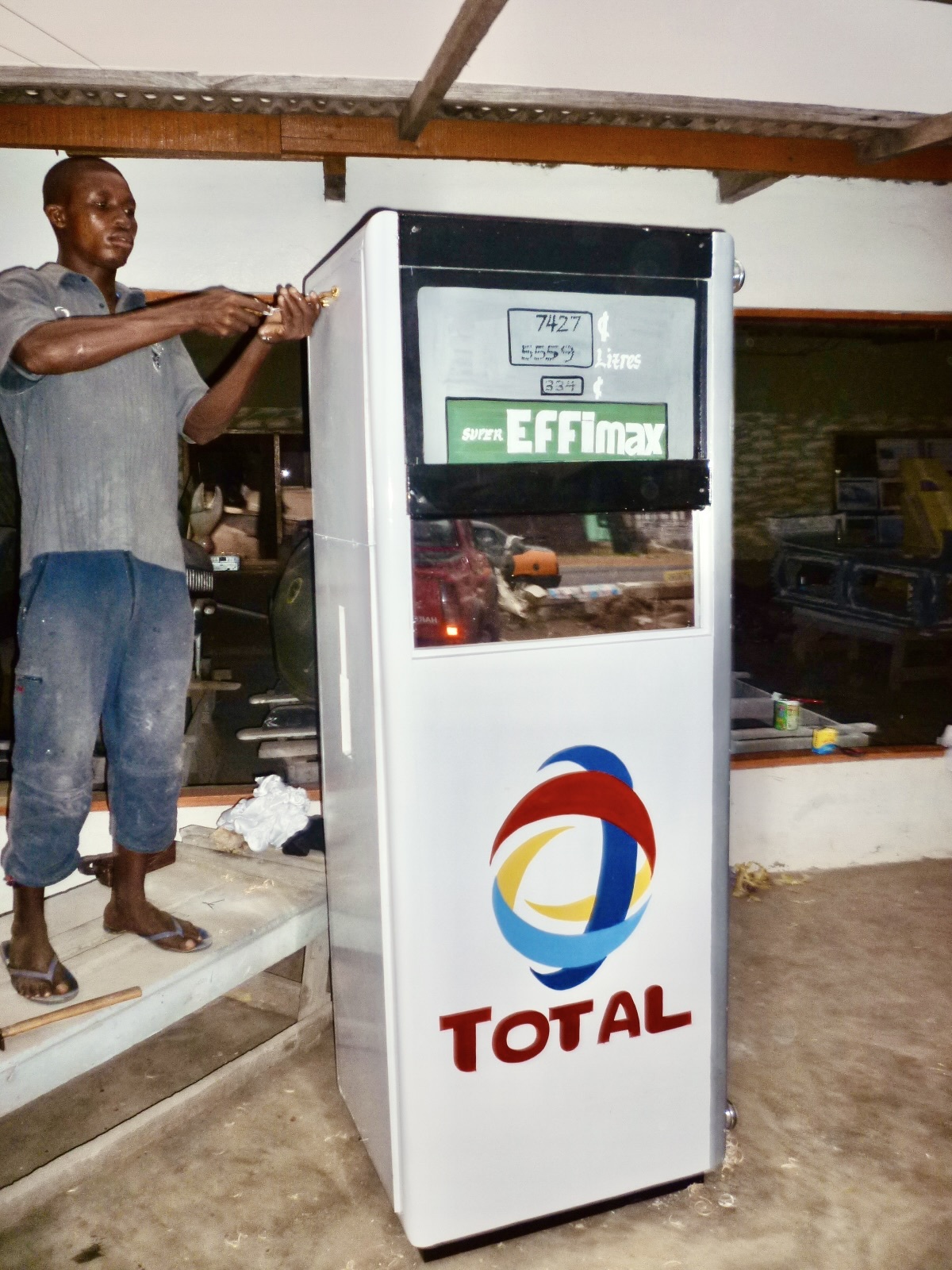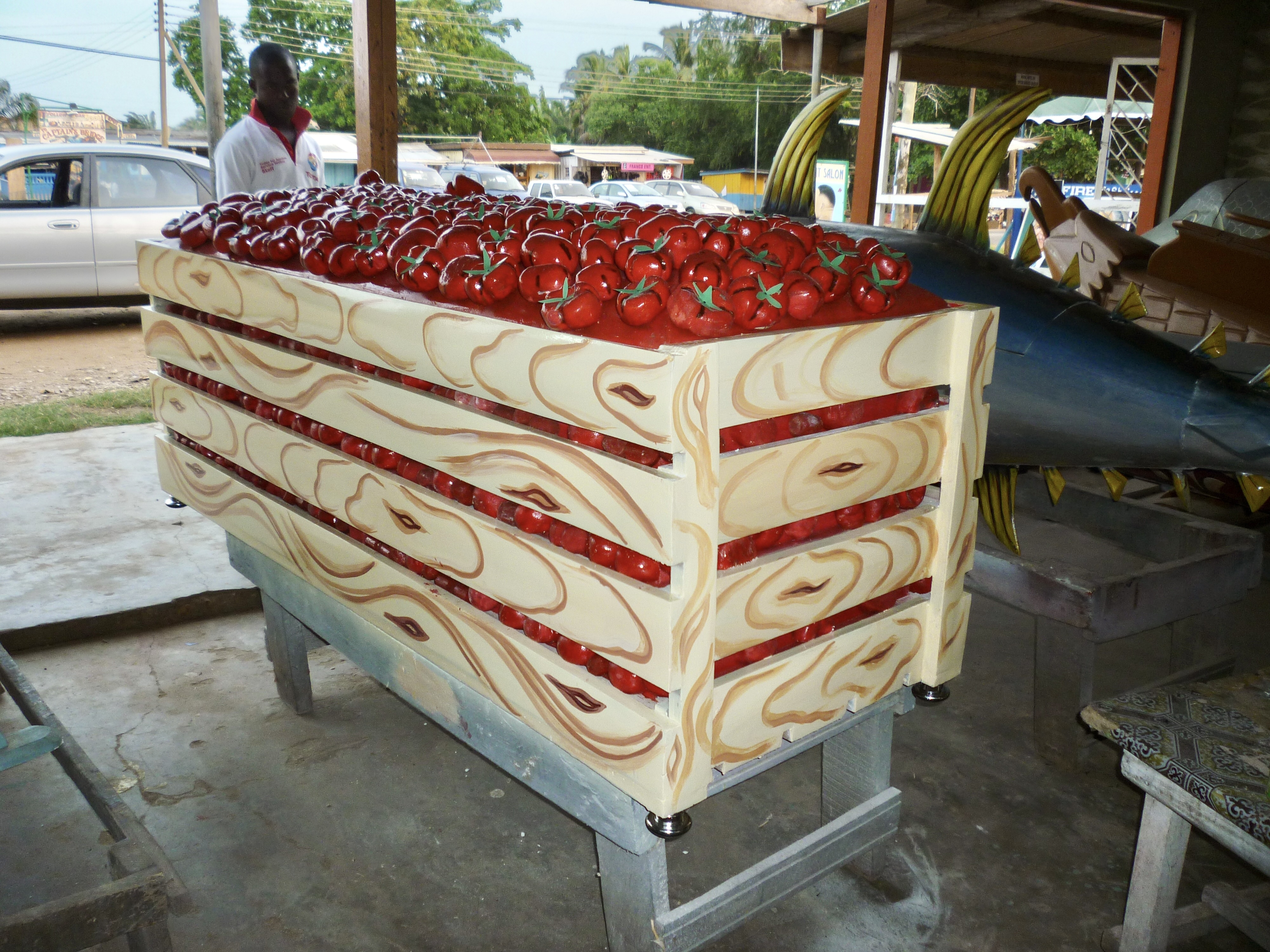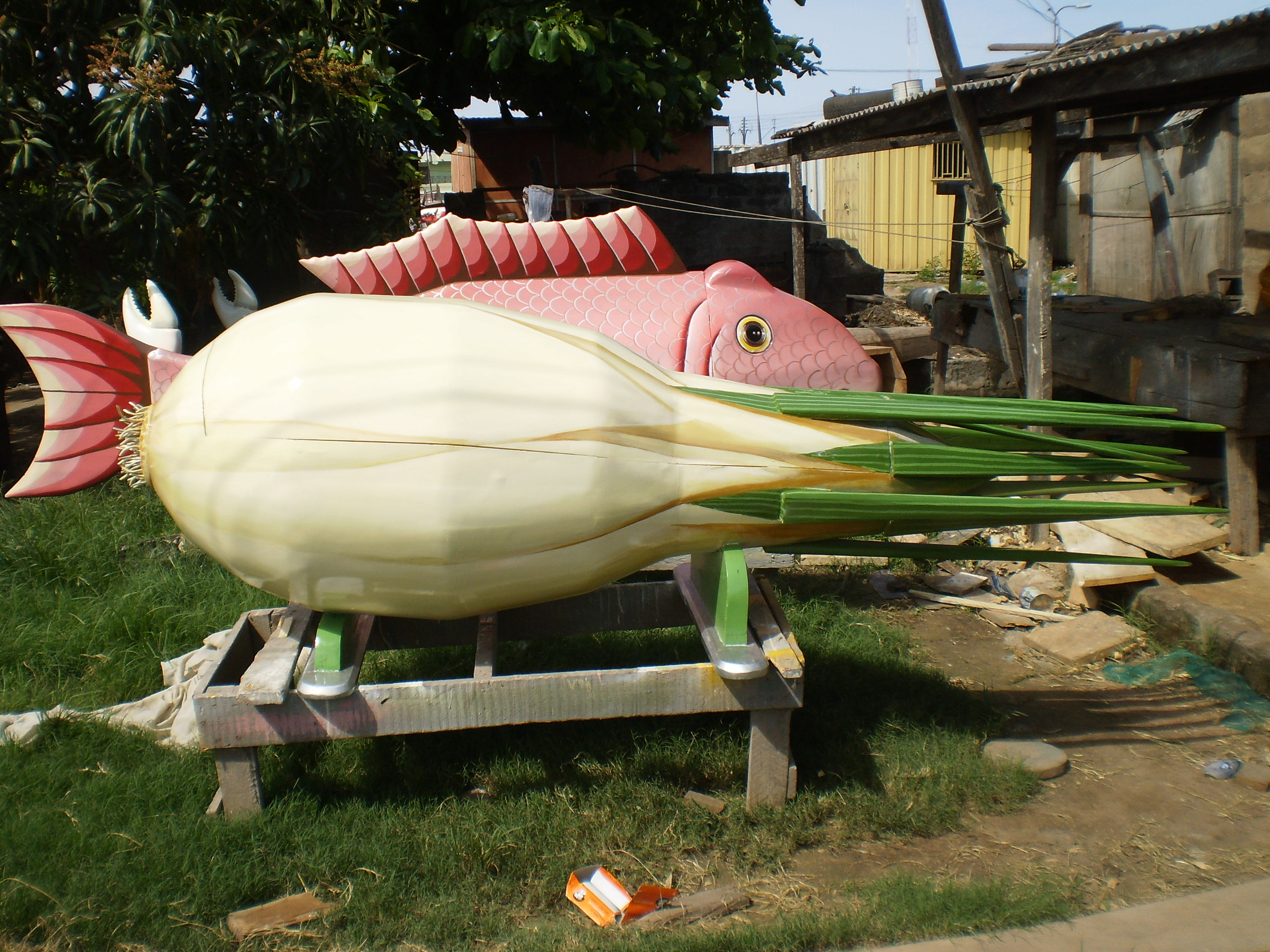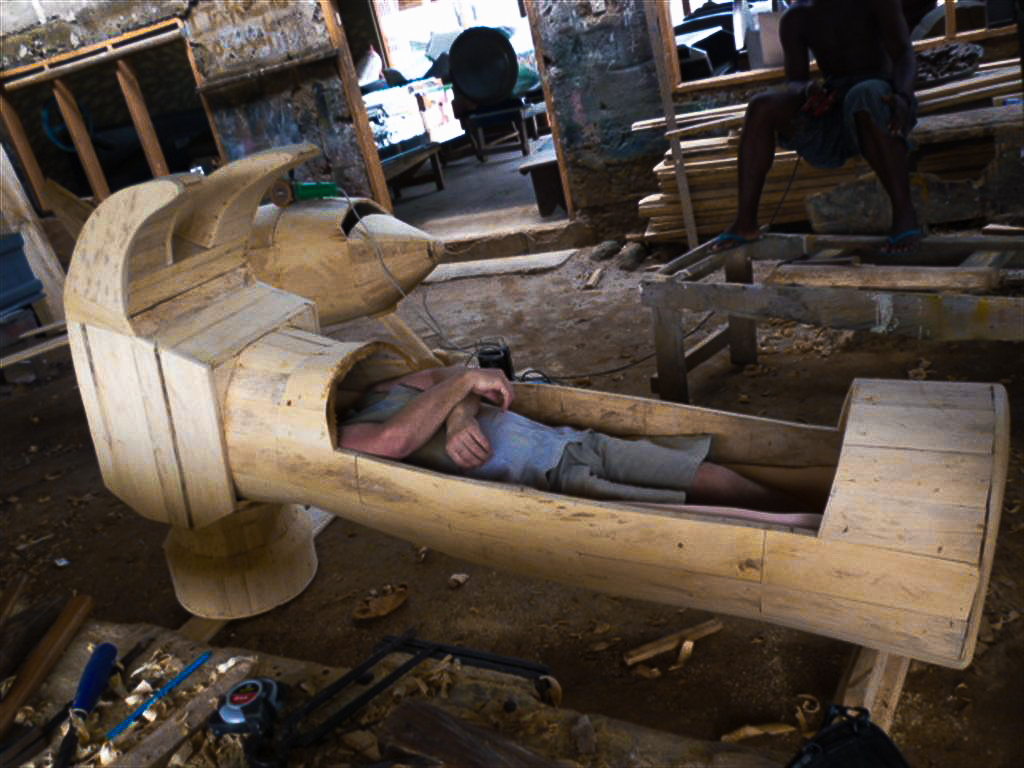The Crazy Coffins of Ghana
June 27, 2024For many of us, commemorating a death seems a pretty somber affair. Black mourning gear. Sad organ music. Brown wooden boxes being lowered into dirt. But in Ghana, there’s an appetite for a more personalized resting place, one that reflects all the color and joy of someone’s life.
Coffins at Kwei Carpentry Workshop, Accra, come in endless shapes and sizes: A giant fish, a cigarette packet, a human-sized chili pepper.
According to workshop director Eric Adjenty Anang, 33, the design is usually based on aspects of a person’s life, profession, or personality. “So if they were a farmer, the family of the deceased could decide based on which crop he farmed,” he explains. “If they were making cocoa, the coffin could be a chocolate bar.”

Often, the decision-making process becomes a healing tool for loved ones. “It’s always fun discussing with them because when they show up, you feel kind of sad and stuff. So as soon as I start talking to them, I try to bring in a bit of humor, you know,” he says, “and I always try to involve the children.”
Once commissioned, Anang and his small team of trainee student carpenters set about bringing the design to life out of wood and nails, a process that can take a month or more.
Despite the positive impact his coffins can make on grieving families, Anang does not view his craft with any particular gravitas.
“People have all these superstitions [about death]. You know, times you shouldn’t be in the studio, times you shouldn’t sit on the work station. But I mean, I consider them a superstition,” he says. “I just see myself working with wood, glue, and nails.”

The workshop has been running for several decades, originally set up by Anang’s grandfather in his family shed. The main aim is to pass his craft down through generations. “This is a tradition I get to make: It’s really young, only a little more than around 60 years old. My grandfather started in the third or fourth generation, and I'm hoping to pass it on to other children or other people to keep the artwork going.”

He adds: “Not necessarily only for burials, either, but also to end up in museums and galleries, so the coffins become something people actually go to look at and are interested in.” While most of Anang’s creations end up hidden six feet underground, he has hosted craft workshops and demonstrations in sculpture and coffin-making, and his works have appeared in exhibitions all over the world.
Not everyone is immediately on board with this break from tradition, though. To the uninitiated, bringing humor into the serious business of death can toe a narrow line. Anang recalls a particular incident while working at a crematorium in Russia in 2011: “Most of the deaths that were happening were people dying of alcoholism and stuff. So I took the chance to make a coffee in the shape of a vodka bottle.”

“We got negative and positive responses and, you know, it's always like that,” he says. “In Ghana, it’s always an honor to be buried in a designed coffin. But for Russia, it was the first time, and everybody has a different opinion about it.”

Still, demand continues to boom in Ghana, and Anang hopes to spread his colorful coffins all over the world. “A couple of years ago, nobody would want to be buried in a pack of cigarettes or beer bottle. But as time goes on, it’s becoming more of a fantasy where people want to be buried in a different way,” he says. “I can tell you for a fact, people want to go in style.”
